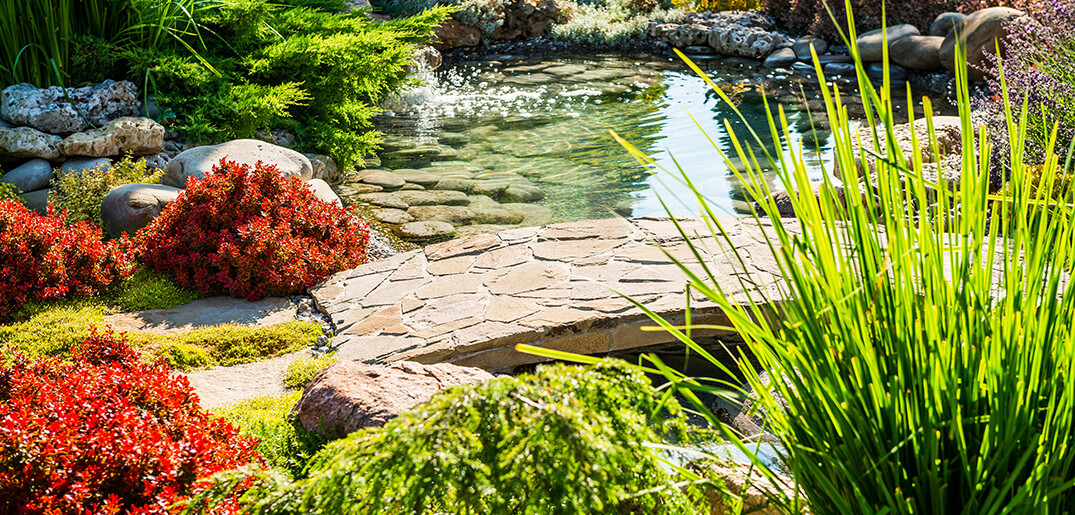Arguably the best time to have a pond is in the summer, when it’s bright outside, plants are in full bloom, and plenty of light shines on your koi fish in the water, highlighting their beauty. But it is not so straightforward to keep a summer pond – there are many things you have to be careful about, which may jeopardize your precious fish and the general ecosystem of the pond. Knowing about these beforehand can help you plan ahead and keep your pond in the best condition throughout the summer. You don’t want to see wilting plants or languishing fish in your pond! Here is a list of potential dangers to your pond during the summer months:
Excessive Algae Growth
Algae is something very unwanted in our pond when it comes to large quantities of algae growth. Not only is it unsightly when it covers all the rocks and surface areas available in the pond, it often turns the water dark and murky too, and does not provide a clean environment for your koi fish to thrive. Furthermore, if the algae grows out of hand, algae strands and blanket weed can clog filtration systems, and you or somebody you hire would have to go through the laborious task of unclogging your filter. Be sure to keep a vigilant eye on the algae growth in your pond so as not to face serious problems.
Lack Of Oxygen
Water contains oxygen for fish to breathe, as well as plants, algae, and beneficial bacteria to grow. Just as humans cannot survive without oxygen, neither can the summer pond ecosystem. Water at cooler temperatures can hold more dissolved oxygen, so if the water heats up in the summer it isn’t good news.
To make things worse, fish become more active in warmer temperatures and demand more oxygen. For every 10⁰C rise in water temperature, the fish experiences 100% increase in metabolic rate. Furthermore, beneficial bacteria also metabolize faster in warmer waters, and plants grow faster too, leading to an overall rapid reduction in available oxygenated water.
Putting a waterfall or fountain in your pond greatly helps with aeration. Otherwise, you can also find aeration kits that do the job. You can use an oxygen testing kit to check if you have a minimum of 60% saturation of oxygen in water, but try to achieve closer to 80%. It is wise to also place your biofilters closer to the aeration feature.
Lower pH Values
At night, the plants release carbon dioxide into the water, which is generally known to lower pH levels. Fish have an average blood pH of 7.4, so it is ideal to maintain a water pH close to this. If the pH levels fluctuate drastically, outside of the acceptable range of 6.5 to 9.0, this can cause great stress to the fish. If this is the case, adding products to the water to balance the pH levels would be a great help. You can purchase these water treatments and many more online at Everything Koi, your one-stop-shop for all your koi needs.


 Blog
Blog



